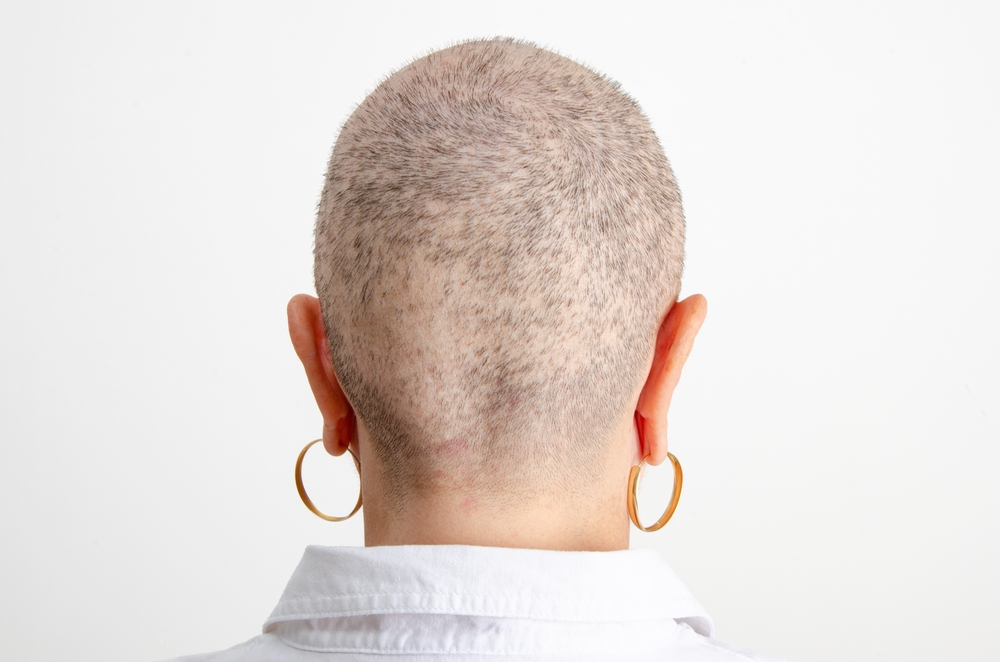When we think about skin cancer, we often picture sun-drenched areas like the face, arms, or legs. However, one area that frequently gets overlooked is the scalp. The scalp is just as susceptible to skin cancer as any other part of the body, yet it’s often neglected in terms of sun protection and regular check-ups. Understanding the signs and symptoms of skin cancer on the scalp is crucial for early detection and effective treatment. In this blog, we’ll explore the various types of skin cancer that can occur on the scalp, their symptoms, and why vigilance is key.
The Types of Skin Cancer Affecting the Scalp
Three main types of skin cancer can develop on the scalp: basal cell carcinoma (BCC), squamous cell carcinoma (SCC), and melanoma. Each type has distinct characteristics, but all require attention if diagnosed.
Basal Cell Carcinoma (BCC)
Basal cell carcinoma is the most common type of skin cancer, making up about 80% of all cases. It usually develops in the basal cells located in the lower layer of the epidermis. BCC is generally slow-growing and rarely spreads to other parts of the body, but it can cause significant local damage if left untreated.
Squamous Cell Carcinoma (SCC)
The second most common type of skin cancer is squamous cell carcinoma. It arises from squamous cells found in the upper layer of the skin. While SCC is often associated with sun exposure, it can also occur in areas not typically exposed to sunlight. This type of skin cancer is more aggressive than BCC and requires prompt attention.
Melanoma
Melanoma is the most serious form of skin cancer, though it represents a smaller percentage of cases. It originates in the melanocytes, the cells that produce melanin. Melanoma can develop anywhere on the body, including the scalp, and is known for its ability to spread rapidly if not detected early.
Signs and Symptoms of Skin Cancer on the Scalp
Recognizing the signs and symptoms of skin cancer on the scalp can make a significant difference in outcomes.
Changes in Moles
One of the most common signs of skin cancer is a change in the appearance of existing moles. Look for changes in size, shape, or color of moles on the scalp. A mole that becomes irregular, uneven, or larger than a pencil eraser may be cause for concern.
New Growths
Keep an eye out for new growths on the scalp, which can indicate skin cancer. This could be a new mole or an unusual bump. While not all new growths are cancerous, any that are asymmetrical, have irregular borders, or vary in color should be evaluated by a healthcare professional.
Persistent Sores
A sore on the scalp that doesn’t heal is another red flag. Skin cancer lesions may bleed, crust over, or appear as a sore that seems to linger. If you notice a sore that doesn’t improve over a few weeks, it’s crucial to consult a doctor.
Itching and Pain
Skin cancer can sometimes be itchy or painful. If you experience persistent itching or discomfort in a specific area of your scalp, it’s wise to have it examined. Pain or tenderness in a particular spot can also signal that something isn’t right.
Scaly Patches
Flat, scaly patches on the scalp can be an early sign of squamous cell carcinoma. These patches may appear red and rough and can sometimes bleed or crust over. If you notice any scaly areas that don’t seem to improve, seek medical advice.
Color Variations
A mole or growth that displays multiple colors—such as brown, black, red, white, or blue—may be indicative of melanoma. Changes in color, particularly if they are unevenly distributed, warrant immediate attention.
Bleeding or Oozing
Any growth on the scalp that bleeds or oozes is concerning. Skin cancers can sometimes break down and ulcerate, leading to discharge. If you observe bleeding or fluid coming from a lesion, it’s essential to get it checked out promptly.
Why Vigilance is Key
The scalp can be an easily forgotten area during self-examination. Unlike the face or arms, it’s not as visible and can be challenging to inspect thoroughly. This makes it even more critical to incorporate scalp checks into your routine.
Regular Self-Examinations
Conducting regular self-examinations can help you catch any abnormalities early. Here’s how to do a thorough scalp check:
- Find a Well-Lit Space: Use good lighting to help you see better.
- Use a Handheld Mirror: This can help you view the back of your scalp.
- Part Your Hair: Use a comb to part your hair and examine your scalp thoroughly.
- Take Note of Changes: Keep a record of any changes in size, shape, or color of moles or spots.
Professional Skin Checks
In addition to self-examinations, scheduling regular appointments with a dermatologist is crucial. A professional can conduct a more thorough examination and may use tools like dermatoscopes to get a clearer picture of any suspicious areas.
Risk Factors for Skin Cancer on the Scalp
Sun Exposure
The most significant risk factor for skin cancer is prolonged exposure to UV rays from the sun. The scalp is often neglected when it comes to sun protection, making it particularly vulnerable.
Fair Skin
People who have fair skin, light-colored hair, and light-colored eyes face an increased risk of developing skin cancer. If you have these characteristics, it’s essential to be vigilant about monitoring your skin.
Age
The risk of skin cancer increases with age. While younger individuals can develop skin cancer, those over 50 are at a heightened risk.
Family History
A family history of skin cancer can increase your susceptibility. If your relatives have been diagnosed with skin cancer, it’s important to take extra precautions and monitor your skin closely.
Previous Skin Cancer
If you have had skin cancer in the past, you are at a higher risk of developing it again. Regular follow-ups with your healthcare provider are vital in these cases.
Protecting Your Scalp
Taking proactive measures can significantly reduce your risk of developing skin cancer on the scalp. Here are some tips for protecting your skin:
- Use Sunscreen: Apply a broad-spectrum sunscreen with at least SPF 30 to your scalp and hairline when going outdoors. Reapply every two hours, especially if swimming or sweating.
- Wear Protective Headgear: A wide-brimmed hat can shield your scalp from direct sunlight. Look for hats with a UV protection rating for added safety.
- Limit Sun Exposure: Try to avoid direct sun exposure during peak hours, usually between 10 AM and 4 PM. Seek shade whenever possible.
- Regular Check-ups: Schedule regular appointments with a dermatologist to keep an eye on any changes in your skin.
- Be Mindful of Tanning Beds: These can increase your risk of skin cancer. If you’re looking for a tan, consider safer alternatives like self-tanning lotions.
Read Also: Understanding the Types of Skin Cancer on the Scalp
Conclusion
Skin cancer on the scalp is a serious but often overlooked concern. By understanding the signs and symptoms, you can take proactive steps toward early detection and treatment. Regular self-examinations, professional check-ups, and sun protection are vital components of maintaining scalp health. If you notice unusual changes on the scalp, visit an affordable Primary Care Clinic in Bedford, Texas. Being vigilant and informed can make all the difference in protecting your skin and ensuring a healthy future.



